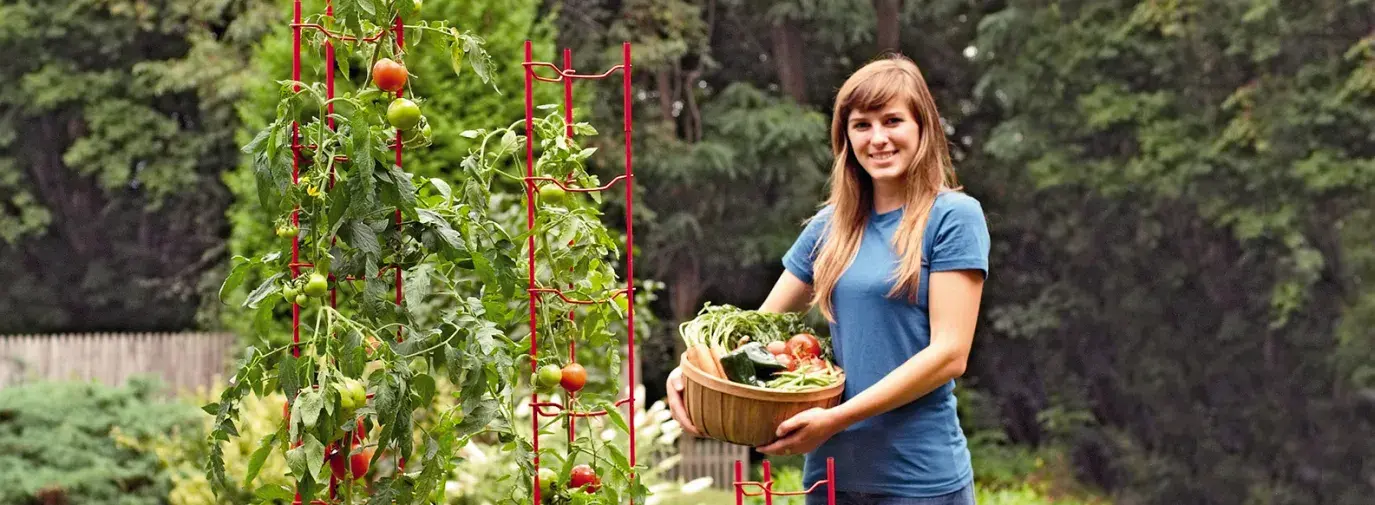
1. Lay off the fertilizer.
A 2015 study by the Appalachian State University in North Carolina found that highly manicured lawns actually give off nitrous oxide, a greenhouse gas that’s 300 times more potent than carbon dioxide. Why? Owners are more likely to dump lots of nitrogen-based fertilizer in concentrated patches, and that fertilizer breaks down into nitrous oxide. While more studies are needed to confirm the findings, it’s just common sense that dumping chemicals onto your yard is bad for the planet. So be a little lazy, and let your yard get a little wilder. And if your garden needs an extra boost, use compost or other organic fertilizer.
2. Say no to pesticides and herbicides, too.
Pesticides and herbicides can foster “superweeds” and hardier-than-thou bugs that have grown immune to them. Plus, they contaminate waterways and contribute to turning rich, carbon-sequestering soil into dead dirt. Keep your yard and garden organic. Rodale Books offers plenty of organic gardening books and magazines to help.

3. Plant a Climate Victory Garden.
Green America’s (Re)Store It! program aims to promote regenerative agriculture, a type of farming that builds healthy soil and turns it into a carbon sink. (See our updated “Living, Regenerated Soil vs. Dead Dirt” graphic for more on how.) A worldwide switch to regenerative farming could significantly help reverse climate change. Now, you can get in on the action and get to know your neighbors by setting up a Climate Victory Garden.
Any food garden can be a Climate Victory Garden. Inspired by the Allied Victory Gardens in WWII, these gardens turn the dirt in your backyard into a restorative, climate-cooling patch of healthy soil. The campaign asks gardeners to commit to ten regenerative gardening principles: grow edible plants, keep soils covered, encourage biodiversity, plant perennials, ditch chemicals, compost, integrate crops and animals (not a must, but integrating animal manure and possibly chickens can make soil richer), use people power and not mechanization, rotate plants and crops, and get to know their garden and understand its efficiency and what works best for it.
Following these principles leads to food production that supports the local economy and soil health, while curbing erosion, pollution, and pests, increasing water retention, and decreasing runoff.
4. Compost your organic waste.
Mix food scraps and yard waste together to create magic—in the form of rich compost that is an ideal organic fertilizer for your garden and house plants. Wondering which type to buy? Check out our article, “Pick a Composter, Any Composter.” If you don’t have a large enough yard—or any yard at all—you can start a worm composting bin and shove it under your sink. The worms will do all the work for you—no smell, no muss, no fuss. We promise, they won’t escape and take over your household. See our article on how to start a worm bin.
5. Choose a low-emission lawnmower.
If your homeowners’ association won’t let you allow your yard to go wild, keep your grass trimmed in as eco-friendly of a manner as possible. All-electric mowers don’t release extra pollution, and if you power them with renewable energy, they’re zero-emission. If you have a small yard or are game for a creative way to exercise, consider an old-fashioned push mower.







